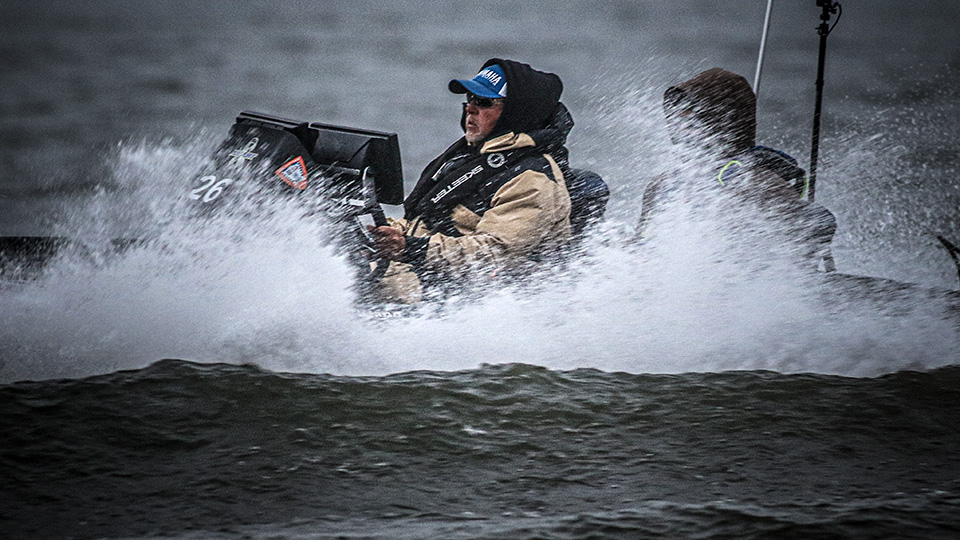
Back around 1990 there was a non-native species of fish found in the Great Lakes. That little fish had fisheries biologists screaming gloom and doom for the Great Lakes fisheries and smallmouth bass. One of the primary fears was this species of fish was spreading at alarming rates. Biologists were sure they would destroy the eggs of the spawning smallmouth and cause permanent harm to populations. This little fish we now know is called a round goby.
Around this same time period, another invasive creature exploded in the Great Lakes – the zebra mussel. Zebra mussels are highly invasive and cover the bottom of a lake and just about everything in a body of water. They can do significant damage because they grow in large colonies or clusters and create a rock or shell type crust on everything in the water. Again, biologists and fisheries experts feared the mussels and the effects they would have on the fisheries. Many reasons were given to justify their fears, but now some 30 years later we know the effects after the invasion of these two species.
The invasion of the goby and the zebra mussel will remain controversial topics I’m sure in the scientific world. However, the addition of these two species will be remembered by anglers as some of the best things that ever happened for smallmouth bass and the Great Lakes fisheries.
The round goby has provided the smallmouth with a high protein food source, and the smallmouth are growing larger than ever before in the Great Lakes. The zebra mussel provided a food source for the round gobies, crawfish, perch and other species. The zebra mussels also serve as a natural water filter. Now, the once stained and murky waters of the Great Lakes are clear and thriving with aquatic vegetation. This has provided some of the finest fishing in the world for many species of fish.
There are many lessons that need to be learned from these events. Only time will tell if the gobies and zebra mussel have turned the Great Lakes into a permanent success, or will the history books tell a totally different story years from now? I don’t know the answer, but I truly believe that there are things that man can prevent and help. I also believe man can mess things up by meddling where he doesn’t know all the facts.
My point of sharing this success story is to stress a point. Fisheries biologists and government agencies make decisions based off evidence that sometimes has not had enough time to be proven right or wrong. They are faced with circumstances that arise and are pressured into reacting. Sometimes mistakes are made.
One of these mistakes happened in my home state. Sometime around 1970, striped bass were introduced into the Coosa River, and that stocking has totally changed the river. The original studies on introducing the saltwater striper into freshwater fisheries were done at Murray State University. They found these fish could survive when stocked into an exclusively freshwater environment and that they would not or could not spawn because of environmental conditions. It was also thought that the population of this large predator fish could be effectively controlled by stocking.
Here’s some information about striper: They share the same basic spawning cycle of a salmon. They both live the majority of their lives in salt water, and they both migrate into freshwater rivers to spawn. The one difference is adult salmon die after they spawn, and striper return to saltwater. All along the eastern and western coasts of the United States, there are naturally occurring striper spawning runs into freshwater rivers. For hundreds of years, they have done so without harming the numbers of native species because they don’t stay in the river long enough to harm the native species.
What’s been learned since the stocking of striped bass is in most cases the total population of stripers could be controlled by stocking but mainly in deep clear highland impoundments. In this type of impoundment, the stripers and native species of fish have seemingly been able to exist together. I believe it’s because these striped bass prefer to remain in deeper depths of the main lake. But in the case of the Coosa River, I believe the science failed when they were introduced here.
What the studies failed to find is these landlocked stripers could and would successfully spawn if there was enough free-flowing water present. For striped bass to successfully spawn they need between 50-70 miles for the spawned eggs to tumble in the current in order to hatch. The upper two pools of the Coosa River both have the necessary conditions for these fish to successfully spawn — and they are spawning.
In 2013, the Alabama DNR released a study that indeed showed the striped bass were successfully spawning on the upper two lakes of the Coosa River, and they were happy that it was occurring. The successful spawning that is taking place is basically stocking the entire Coosa River. Every time there’s a high-water event or power is being generated, the spawned fertilized eggs or hatched fry are flowing down the length of the river. On top of the successful spawning that was noted in that report, the state of Alabama also stocked 500,000 striped bass fingerlings into state waters, according to a different report issued in January 2021.
Over the past 15 years there’s been a steady decline in the catch rate of largemouth and spotted bass on every Coosa River impoundment, and I believe the striped bass have contributed to the decline. In the beginning, there was a decline in the numbers of native largemouth bass caught in the upper river portion of every Coosa River impoundment. The upper portions of these impoundments are preferred by the stripers most of the year because of the cooler flowing water put off when power is being generated.
The Coosa River chain is also blessed with many spring-fed creeks, and many of them are found in the upper portions of each impoundment. Once home to thriving populations of largemouth, spotted and white bass, these creeks are now dominated by striper, and they migrate into these creeks in the winter and summer. In the winter months when water temperatures are cold, the water flowing from these springs will be in the mid 50s. In the summer the stripers will migrate to the far reaches of these creeks seeking cooler water.
In the dog days of an Alabama summer, water temperatures around 70 degrees can be found in those creeks. That is where the stripers summer, and they feed on whatever they can find. Where there used to be big schools of gizzard shad, bluegill and bass swimming in the clear cool water around the shoals of these creeks, there are now giant, skinny stripers.
I can go on and on about the issues facing my favorite fisheries in the world and the disastrous decision that was made to stock this species of fish, but that won’t change what’s been done. The only thing that can be done at this point is to figure out how to control the numbers of a large predator fish that have altered the forage base and predator chain of a once fertile river.
I sure hope I live long enough to write about the miracle on the Coosa River.
